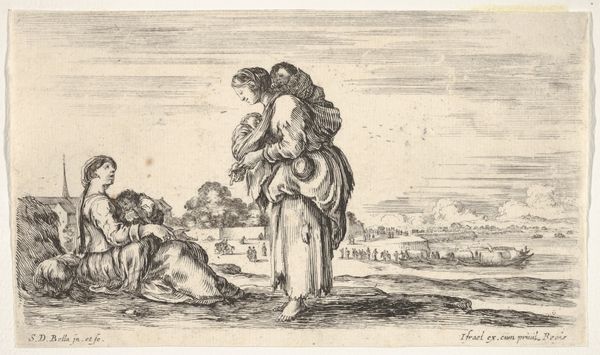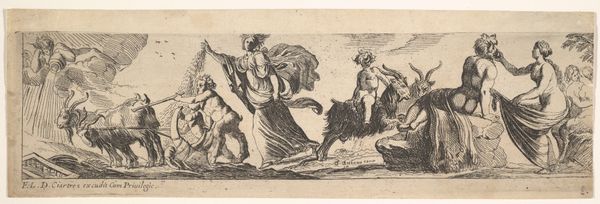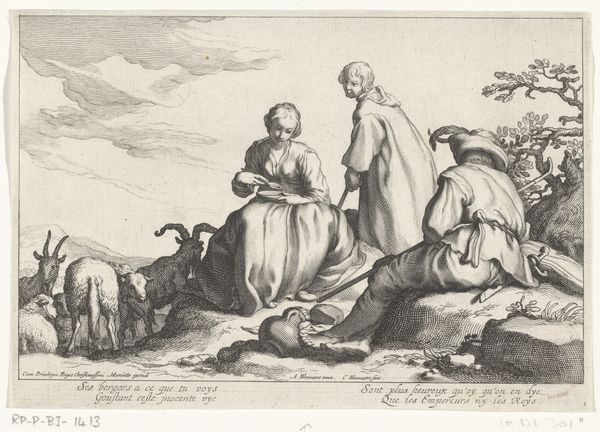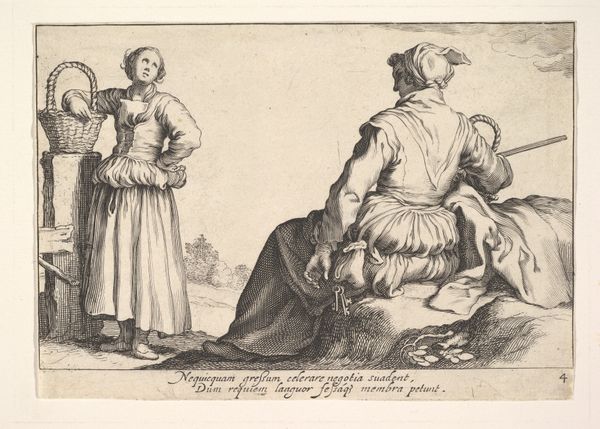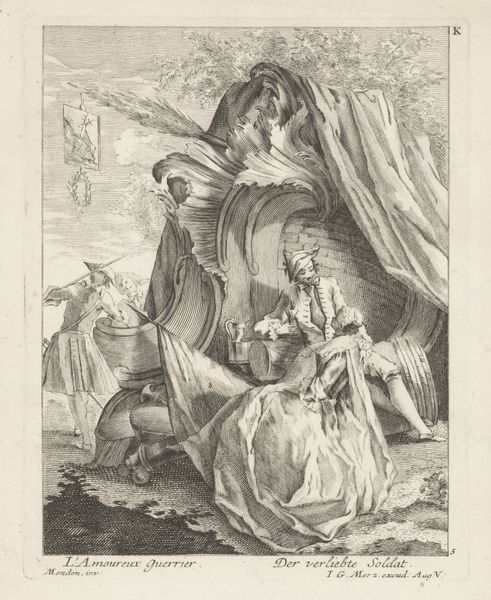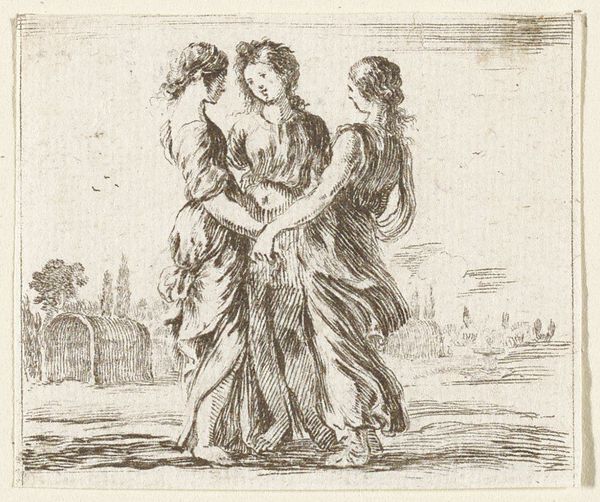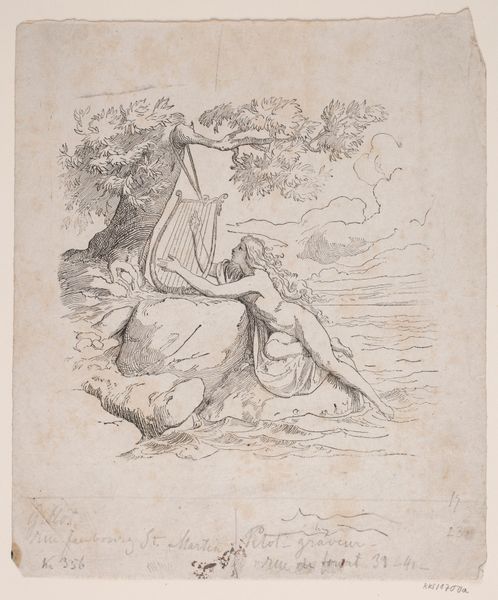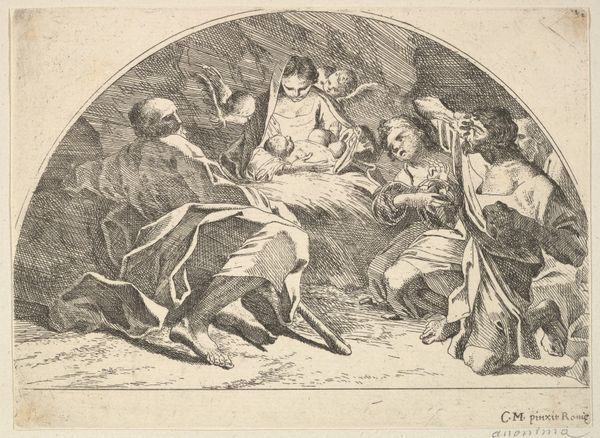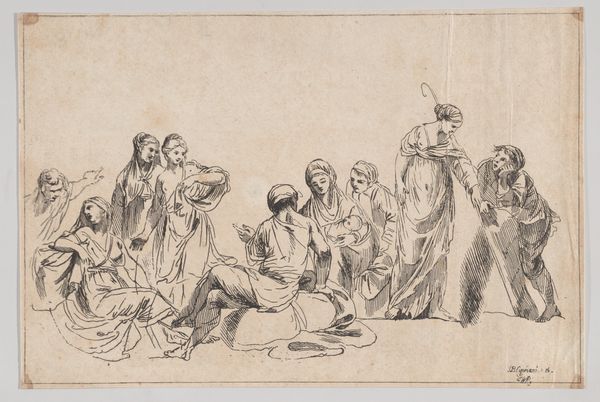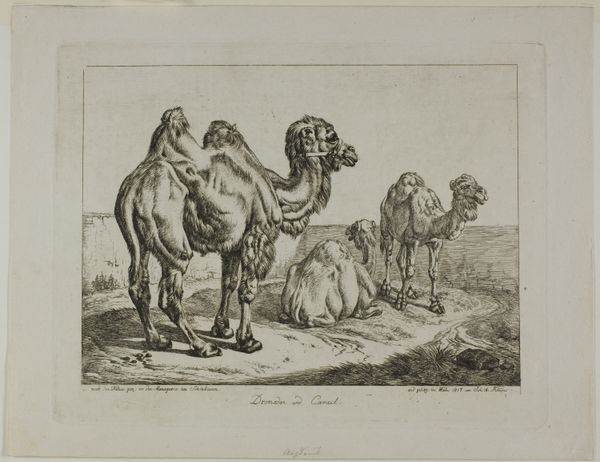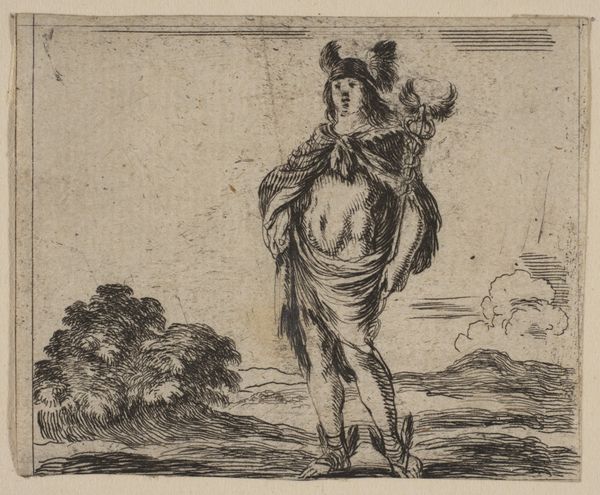
Plate 14: a young peasant woman and her child sitting side saddle atop a horse in center, another peasant woman to right, holding a large bag in her left arm, from 'Diversi capricci' 1644 - 1647
0:00
0:00
drawing, print, engraving
#
drawing
#
baroque
# print
#
landscape
#
figuration
#
horse
#
genre-painting
#
italian-renaissance
#
engraving
Dimensions: Sheet: 3 1/4 x 4 1/16 in. (8.3 x 10.3 cm)
Copyright: Public Domain
Editor: This is Plate 14 from Stefano della Bella’s ‘Diversi capricci,’ created between 1644 and 1647. It's an engraving featuring two peasant women, one holding a child on horseback, the other carrying a heavy-looking bag. The linework seems so delicate, almost fragile. I'm struck by how it portrays labor. What can you tell me about it? Curator: Note the tools required for Della Bella to achieve this print; the metal plate, the acid for etching, the press itself, not to mention the labor involved in each impression. The image itself depicts further labor - women burdened with work. Consider the "bag" – what material is it? What purpose does it serve? Is it food? Or material destined to be sold in the marketplace? Editor: That’s interesting – I hadn't thought so much about the bag itself as a sign of labor. The print-making process itself also mirrors their toil somehow. Do you think Della Bella intended for us to draw this connection? Curator: It's not just about authorial intent, but how the image functions within a system of production. These prints would have been commodities, sold and traded. This image of peasant labor itself becomes a form of capital, packaged and consumed. Editor: So the act of creating the print is embedded in economic exchange, depicting women at work? I guess I tend to see artwork detached from all of that, but here it feels like that's the whole point. Curator: Precisely. And by focusing on these processes – the printmaking and the portrayal of labor – we can unravel larger social and economic contexts of 17th-century Italy. This wasn't just about artistry; it was about materiality, labor, and consumption all feeding into each other. Editor: I never really considered the materials involved in making art beyond just paint or sculpture. This makes me want to rethink how art reflects the real world around its making. Curator: And to see art as embedded within economic and social systems, as opposed to floating freely above them.
Comments
No comments
Be the first to comment and join the conversation on the ultimate creative platform.
